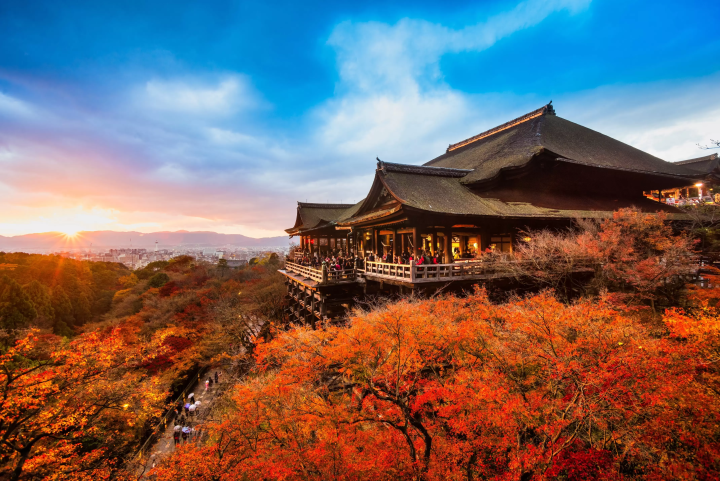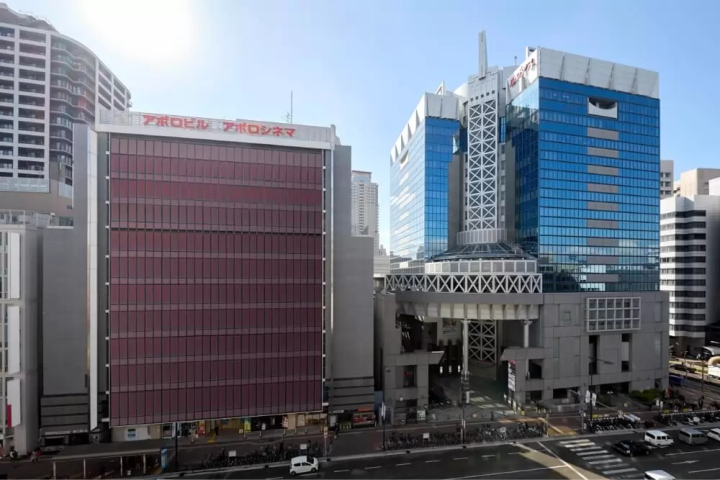[Asago City, Hyogo Prefecture] How to climb the ruins of Takeda Castle, the "Machu Picchu of Japan"
![[Asago City, Hyogo Prefecture] How to climb the ruins of Takeda Castle, the "Machu Picchu of Japan"](https://resources.matcha-jp.com/resize/720x2000/2024/09/21-198337.webp)
One of the most spectacular spots in Hyogo Prefecture. Also known as the "Machu Picchu of Japan" and the "Castle in the Sky," many people come from far away to see it. We will provide detailed information on how to get to Takeda Castle Ruins, how to climb the mountain, and the highlights of the castle. Please read on and come to Takeda Castle Ruins.
-
Table of Contents
- What is Asago City?
- What is Takeda Castle Ruins?
- Access to Asago City
- Takeda Castle Ruins Access Map
- How to climb to the Takeda Castle ruins [From Yamashiro no Sato]
- How to get to the Takeda Castle ruins [From JR Takeda Station]
- Highlights of Takeda Castle Ruins
- Photo spot
What is Asago City?
Asago City is located in the northern part of Hyogo Prefecture. The area is dotted with valuable historical and cultural heritage from ancient times to modern times, such as the ruins of Takeda Castle, one of Japan's 100 most famous castles, the Chasuriyama Tomb, the largest circular burial mound in the Kinki region, and industrial heritage sites such as the historic Ikuno Silver Mine, making the entire area a museum in itself.
What is Takeda Castle Ruins?
![[Asago City, Hyogo Prefecture] How to climb the ruins of Takeda Castle, the "Machu Picchu of Japan"](https://resources.matcha-jp.com/resize/720x2000/2024/09/22-198360.webp)
charm
Takeda Castle Ruins stretches 400m north to south and 100m east to west, and is said to be the largest stone wall remains in Japan. The stone walls from before the Edo period remain almost intact. The stone walls, built using the "Anato-zumi" method with almost no processing of natural stones, still show their majestic appearance even after more than 400 years. In 1943, it was designated a national historic site as one of the country's leading mountain castle ruins. In 2006, it was selected as one of "Japan's 100 Great Castles" by the Japan Castle Foundation. One of Hyogo Prefecture's most scenic spots, "Japan's Machu Picchu," and also known as "Castle in the Sky" due to the fantastic sight of the castle ruins floating in a sea of clouds.
![[Asago City, Hyogo Prefecture] How to climb the ruins of Takeda Castle, the "Machu Picchu of Japan"](https://resources.matcha-jp.com/resize/720x2000/2024/09/22-198357.webp)
history
Takeda Castle was built in 1441 (the first year of the Kakitsu era) as one of the frontline bases for the Yamana clan against the Akamatsu clan. After that, the Otagaki clan ruled the castle for seven generations, but in 1577 (the fifth year of the Tensho era), it was captured by Hashiba (Toyotomi) Hideyoshi in his attack on Tajima, and Hashiba Hidenaga became the castle lord. From then on, Takeda Castle functioned as a base castle for the Azuchi-Toyotomi clan. In 1580 (the eighth year of the Tensho era), Hashiba Hidenaga entered Izushi-Arikoyama Castle, and Takeda Castle was then entrusted to Hidenaga's subordinate, Kuwayama Shigeharu. Furthermore, in 1585 (the thirteenth year of the Tensho era), when Kuwayama Shigeharu became the castle lord of Kii-Wakayama, Akamatsu Hirohide became the castle lord. For fifteen years, from the thirteenth year of the Tensho era to the fifth year of the Keicho era, Akamatsu ruled well as the last lord of Takeda Castle, and was loved by the people as a "ruler of benevolence." The stone walls that can be seen today are said to have been built when Hirohide extensively renovated the castle. In the Battle of Sekigahara in 1600, Hirohide sided with the Western Army, but later participated in the siege of Tottori Castle as part of the Eastern Army and was victorious. However, he was ordered by Ieyasu to commit suicide for setting fire to the castle and burning down the city, and he ended his life in Tottori at the age of 39. With no lord left, Takeda Castle was abandoned.
![[Asago City, Hyogo Prefecture] How to climb the ruins of Takeda Castle, the "Machu Picchu of Japan"](https://resources.matcha-jp.com/resize/720x2000/2024/09/22-198359.webp)
![[Asago City, Hyogo Prefecture] How to climb the ruins of Takeda Castle, the "Machu Picchu of Japan"](https://resources.matcha-jp.com/resize/720x2000/2024/09/22-198358.webp)
Access to Asago City
Please click here for information on how to get to Asago City.
By car
The nearest interchange is "Wadayama IC" on the Kitakinki Toyooka Expressway and the Bantan Link Expressway. After getting off the interchange, turn left at the "Wadayama IC Mae" traffic light, and it's about a 10-minute drive to each parking lot. For parking information, please see the "Takeda Castle Ruins Access Map" below. The closest parking lot to Takeda Castle Ruins is Yamashiro no Sato Parking Lot. Please start from the west hiking trail.
If you are coming by train
The nearest station is "Takeda Station" on the JR Bantan Line. Take the Tenku Bus from the "Takeda Station" bus stop to the "Takeda Castle Ruins" bus stop, and from there it is a 20-minute walk along the west mountain trail to the toll gate at the Takeda Castle Ruins. Alternatively, you can walk 40 minutes along the station back mountain trail, or 40 minutes along the Omotemai Shrine mountain trail, both of which are steep. Please be careful when climbing.
Takeda Castle Ruins Access Map
![[Asago City, Hyogo Prefecture] How to climb the ruins of Takeda Castle, the "Machu Picchu of Japan"](https://resources.matcha-jp.com/resize/720x2000/2024/11/01-207152.webp)
For more information, please see below. English and Chinese versions are also available below.
How to climb to the Takeda Castle ruins [From Yamashiro no Sato]
![[Asago City, Hyogo Prefecture] How to climb the ruins of Takeda Castle, the "Machu Picchu of Japan"](https://resources.matcha-jp.com/resize/720x2000/2024/09/24-198640.webp)
How to get to the Takeda Castle ruins [From JR Takeda Station]
![[Asago City, Hyogo Prefecture] How to climb the ruins of Takeda Castle, the "Machu Picchu of Japan"](https://resources.matcha-jp.com/resize/720x2000/2024/10/18-203565.webp)
Recommended route: Tenku Bus + West Trail
Take the Tenku Bus, which runs around JR Takeda Station, Yamashiro-no-Sato, etc., to the Takeda Castle Ruins bus stop on the west mountain trail. From there, it's about a 20-minute walk (800m) to the Otemon Gate entrance.
From JR Himeji Station or JR Wadayama Station, take the JR Bantan Line to JR Takeda Station
Takeda Station on the JR Bantan Line opened in 1906 (Meiji 39). The station building, with its tiled roof and white walls, is still in use today, just as it was back then.
![[Asago City, Hyogo Prefecture] How to climb the ruins of Takeda Castle, the "Machu Picchu of Japan"](https://resources.matcha-jp.com/resize/720x2000/2024/09/24-198602.webp)
Take the Sky Bus from JR Takeda Station to the castle ruins.
![[Asago City, Hyogo Prefecture] How to climb the ruins of Takeda Castle, the "Machu Picchu of Japan"](https://resources.matcha-jp.com/resize/720x2000/2024/09/24-198604.webp)
The Tenku Bus may change its operating time depending on the season and road conditions. Please be sure to check in advance.
Yamashiro-no-Sato (via, detour)
There is a bus stop at Yamashiro-no-Sato as well. Don't get off there, just ride to the Takeda Castle Ruins bus stop.
![[Asago City, Hyogo Prefecture] How to climb the ruins of Takeda Castle, the "Machu Picchu of Japan"](https://resources.matcha-jp.com/resize/720x2000/2024/10/03-200292.webp)
It's a good idea to make a detour to have lunch or sweets, but please be sure to pay attention to the time of the next bus.
Walk from the Takeda Castle Ruins bus stop or taxi stand to the castle
![[Asago City, Hyogo Prefecture] How to climb the ruins of Takeda Castle, the "Machu Picchu of Japan"](https://resources.matcha-jp.com/resize/720x2000/2024/09/24-198692.webp)
The Tenku Bus will take you to the Takeda Castle Ruins bus stop, and you can also board the return bus from here.
From here, it's a 20-minute walk to the ruins of Takeda Castle. The asphalt road continues to the reception building. It's easy to walk, but many areas of the castle ruins are unpaved, so we recommend wearing hiking boots or sneakers.
Detour (Toilet)
![[Asago City, Hyogo Prefecture] How to climb the ruins of Takeda Castle, the "Machu Picchu of Japan"](https://resources.matcha-jp.com/resize/720x2000/2024/10/03-200284.webp)
After walking a little, there is a slope going up to the side, and there is a sign that says "Mid-hill Toilet."
If you climb up there
![[Asago City, Hyogo Prefecture] How to climb the ruins of Takeda Castle, the "Machu Picchu of Japan"](https://resources.matcha-jp.com/resize/720x2000/2024/10/03-200285.webp)
There are also toilets and vending machines (which may be sold out), so please stop by if you need anything.
Rock that won't fall
![[Asago City, Hyogo Prefecture] How to climb the ruins of Takeda Castle, the "Machu Picchu of Japan"](https://resources.matcha-jp.com/resize/720x2000/2024/09/24-198693.webp)
There is a rock that stands on the edge of a cliff beside a large curve, and looks as if it will fall, but it never does. On the opening day in March, local residents pray for safety and success in exams under the direction of a priest. Recently, it has become popular among students taking exams, and the number of people visiting to pray for success is increasing.
From the entrance to the toll collection building, we finally head to the castle ruins
![[Asago City, Hyogo Prefecture] How to climb the ruins of Takeda Castle, the "Machu Picchu of Japan"](https://resources.matcha-jp.com/resize/720x2000/2024/09/24-198694.jpeg)
Admission fee: Individual admission fee: Adults (high school students and above) 500 yen per person, junior high school students and below free
Group rates (20 or more): Adults (high school students and above) 450 yen each, junior high school students and below free
The viewing hours for Takeda Castle Ruins vary depending on the season. For details, please see the Takeda Castle Ruins website.
Highlights of Takeda Castle Ruins
Otemon Gate (Masugata Tiger's Gate)
Otemon means the main entrance, and it is believed that a gate existed here. The stone wall is narrow and curves to the left to make it difficult for enemies to invade, and is high on all four sides like the bottom of a square, making it easy to attack from above.
![[Asago City, Hyogo Prefecture] How to climb the ruins of Takeda Castle, the "Machu Picchu of Japan"](https://resources.matcha-jp.com/resize/720x2000/2024/09/24-198609.webp)
Arrow hole
At the top of the stairs, there is a stone in the stone wall with similar holes lined up in a straight line. It is thought that holes (arrow holes) were drilled like perforations in the stone and then it was broken by hammering it with a special tool. One way to enjoy Takeda Castle ruins is to think about why the stones with arrow holes from that time were here and why they were not broken.
![[Asago City, Hyogo Prefecture] How to climb the ruins of Takeda Castle, the "Machu Picchu of Japan"](https://resources.matcha-jp.com/resize/720x2000/2024/09/24-198688.webp)
Sit on a bench in Sannomaru and look down on the castle
![[Asago City, Hyogo Prefecture] How to climb the ruins of Takeda Castle, the "Machu Picchu of Japan"](https://resources.matcha-jp.com/resize/720x2000/2024/09/24-198690.webp)
![[Asago City, Hyogo Prefecture] How to climb the ruins of Takeda Castle, the "Machu Picchu of Japan"](https://resources.matcha-jp.com/resize/720x2000/2024/10/03-200298.webp)
Castle tower base (counter-block stacking)
Sangizumi is a technique in which rectangular stones are stacked alternately at the corners of a stone wall, with the long and short sides of each stone overlapping. This increases the strength of the stone wall and makes it less likely to collapse.
![[Asago City, Hyogo Prefecture] How to climb the ruins of Takeda Castle, the "Machu Picchu of Japan"](https://resources.matcha-jp.com/resize/720x2000/2024/10/18-203613.webp)
View from the castle tower
![[Asago City, Hyogo Prefecture] How to climb the ruins of Takeda Castle, the "Machu Picchu of Japan"](https://resources.matcha-jp.com/resize/720x2000/2024/10/03-200303.webp)
Power Stone (Mirror Stone)
![[Asago City, Hyogo Prefecture] How to climb the ruins of Takeda Castle, the "Machu Picchu of Japan"](https://resources.matcha-jp.com/resize/720x2000/2024/09/24-198608.webp)
It is a flat megalith with a mirror-like surface, and was considered a symbol of the feudal lord's power. It was placed in the passageway near the entrance, and is said to have had the effect of intimidating enemies. Recently, it has been said that the mirror stone at Takeda Castle ruins is a power stone, and that if you hold your hand over it, you will feel energized.
Finally, take a commemorative photo at Minamisenjo with the stone wall in the background.
![[Asago City, Hyogo Prefecture] How to climb the ruins of Takeda Castle, the "Machu Picchu of Japan"](https://resources.matcha-jp.com/resize/720x2000/2024/10/03-200300.webp)
Photo spot
Ritsuunkyo Gorge
Tateunkyo Gorge, also known as "Tajima Yoshino," is the most famous cherry blossom viewing spot in northern Kinki, where mountain cherry blossoms and Somei Yoshino cherry blossoms bloom in abundance in spring.
In recent years, it has also become a popular observation and photo spot from which you can see the ruins of Takeda Castle, which has been likened to a "castle in the sky" floating in a sea of clouds.
![[Asago City, Hyogo Prefecture] How to climb the ruins of Takeda Castle, the "Machu Picchu of Japan"](https://resources.matcha-jp.com/resize/720x2000/2024/09/24-198606.webp)
This is a voluntary tourism organization that promotes the attractions of the northern Kinki region of Tamba, Tajima, Tango, and Wakasa. The flavors of Northern Kinki are not limited to crab, a representative winter sea delicacy, but also include oysters, yellowtail, and pufferfish, as well as cockles, rock oysters, and white squid in the summer, and mountain flavors such as Tamba chestnuts and Tamba black beans, and the summer fruit sand dune melon, making this an area where you can enjoy gourmet food all year round. I would be happy to be able to visit the vast northern Kinki region many times and share information on railroad journeys.
The contents on this page may partially contain automatic translation.



![[Takeda Castle Ruins, Asago City, Hyogo Prefecture] How to enjoy the spectacular "Castle in the Sky"](https://resources.matcha-jp.com/resize/200x2000/2024/09/21-198326.webp)

























![[50 minutes by car from Nagoya] Experience "sake and culture" in Tokoname](https://resources.matcha-jp.com/resize/720x2000/2026/01/13-255411.webp)



